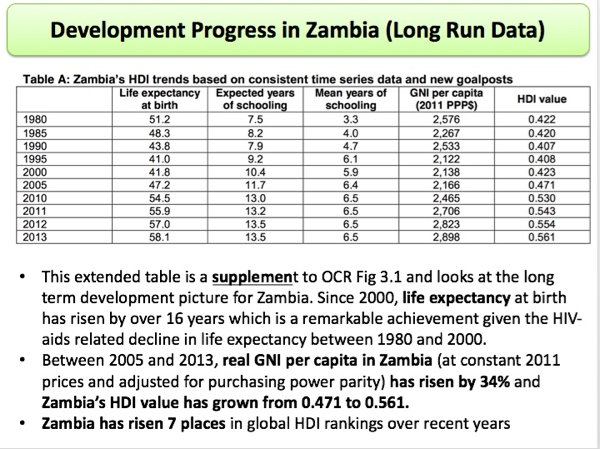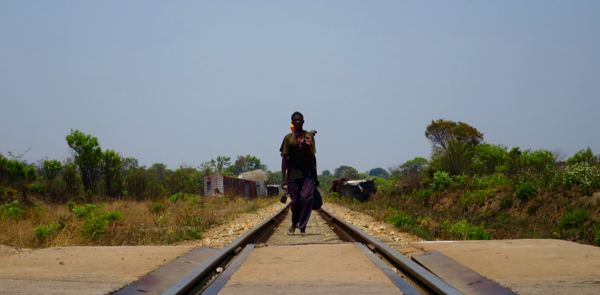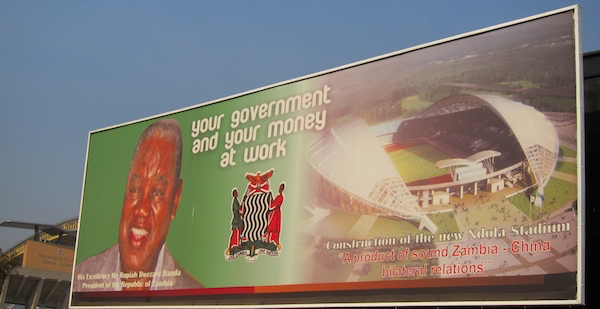Beyond the Bike
Triple deficits and long run prospects for Zambia
I’m writing this from the historic city of Malacca in Malaysia, overlooking arguably the most important bit of sea for global trade over the last 1000 years. However, more on this later as I’m reverting in this blog back to Zambia, mainly for teachers and learners focusing on the OCR pre-release. So if you’re not interested in Zambia or teaching OCR this year, feel free to wait for the next update! Having taught the OCR syllabus for 6 years and spent 6 months in Zambia over that period, I thought it would be useful to add some thoughts on the pre-release, linking with Tutor2U’s excellent resource pack. Moreover, if any teachers want to skype me into their classroom, get in touch and we’ll try and sort out a time over the next few weeks!

There is a lot of interesting stuff in the pre-release that I’ve already focused on in economic cycle blogs, in particular comparative advantage & the terms of trade in Zambia; remittance payments - focusing in Somalia. The theory is the same (both from my previous economic cycle) as well the dreaded ‘resource curse/dutch disease’ that primary producing nations such as Zambia often suffer from.
However, I wanted to focus on two things here that will hopefully be useful. The first is the economic crisis that the country currently facing. Allusions to a downturn in economic prospects are made in the pre-release:
‘The growth of private sector investment has recently slowed down, as fears of ‘resource nationalisation’ have deterred FDI’
However, given that it was printed nearly 2 years ago, it is now way out of date in terms of the current economic environment. I went into detail on what I titled ‘Zambia’s triple deficits - Kwacha on the run’ back in November.
In summary, Zambia is running a traditional twin deficit (fiscal and trade), caused partly by the weakness of the Chinese Economy and the associated collapse in copper prices but also a third deficit in power generation. Mismanagement of the economy since 2011 has also been a primary cause of this crisis and this has implications for my second point below. Please do have a read of the blog, in any case.
The situation seems to have stabilised a bit since November, shown by the recent strength of the Kwacha but the headlines from the dependable Economist Intelligence Unit still make for grim reading and the weakness of the Kwacha last year is feeding through into consumer price inflation.


The Kwacha has rebounded since November but the headlines on the economy remain negative
There is excellent information in the Tutor2U supporting pack with lots of data. Notwithstanding the recent crisis, you can see in the chart pack (e.g. slide 126 below) that progress in Zambia over the last 20 years has been impressive and why it was ’upgraded’ to a middle income country by the world bank in 2011, explained in the Guardian (great resource for development btw!) Zambia’s progress until 2011 was very promising…

Zambia's progress led it to being re-classificed as a middle-inomce country in 2012
The second point is to look at some issues relating to extract 5 and the likely focus of the essay, namely supply side policies and long run economic growth. Unless OCR uses their final set of exams for this specification to break their pattern, the 20 marker usually comes for the final sentence or two of the introduction:
‘Reforms to the supply-side of the economy are seen by some as the key to promoting long run economic growth in Zambia’
So don’t be surprised if the essay question is something as obvious as ‘Discuss the effectiveness of supply-side policies to promote long run economic growth in Zambia’ !
Of course, it could relate more broadly to development or economic stability but below are a few thoughts on the constraints on the supply-side of the economy mentioned in Fig 5.2:
1. Poor access to credit is an issue but technological change is enabling this to change, thanks to mobile banking. Whilst Zambia is a bit behind Kenya and its legendary M-Pesa system (see my 2012 blog), this seems to be changing, according to recent reports. For analysis, think financial inclusion -> greater access to money for poor entrepreneurs -> new businesses -> job creation (and link to multiplier for evaluation marks).

No point waiting for that train: poor infrastructure is still a problem in Zambia
2. Poor infrastructure is certainly an issue, especially if you expand its meaning to include power generation. The power crisis, as I explain in my November blog, is arguably the most damaging of the deficits on the long run performance and potential of the economy. As a side point, the Chinese have invested in lots of new infrastructure but it hasn’t alway been the most sensbile use of money (e.g. a brand new football stadium that is underused when the roads are crumbling away!). This would be another way of evaluating the pros/cons of FDI.

A 'gift' from China (built in 2011) but is an underused football stadium good use of money when poverty is so high?
3. Corruption/Excess Bureaucracy is still a big feature in Zambia. This is a difficult issue to quantify but anecdotally, I certainly spoke to many frustrated business people, especially regarding the latter. For example, a new railway was due to be built linking the Copperbelt region with Angola but government bureauracy is holding it back, despite the project having enough investors and not costing the government any money. This is holding back the second point above! Fig 5.2 last point is really an extension of bureaucracy.
Finally, although there is no real reference to education in the pre-release this is going to be crucial for long run growth, especially given that nearly half of the population are under 15 years, so there is a real need to diversify the economy away from the primary sector and boost employment. Linking education to supply side policies is of course an easy way to score both anaylsis and evaluation marks but make sure it is more sophisticated that what you used in your unit 2 exam last year!

Education is going to be critical as the burgeoning youth population (slide 219 of Tutor2U pack) seeks work outside the primary sector
Finally, remember to link your points together too (all four of the constraints mentioned in extract 5 are linked together and students could score evaluation marks for noting this (obvious?) point.
Good luck and if you want to try a skype, let me know. I’ve done a few with my old school, Morpeth in Tower Hamlets, and it has worked well when the technology problems, ironically in London, were sorted!

In the meantime, I’m cycling up to China and trying to understand more about the ’New Southern Silk Road’ that is also referenced in the Tutor 2U resource pack. If you haven’t already bought it, I’d recommend it!
When you subscribe to the blog, we will send you an e-mail when there are new updates on the site so you wouldn't miss them.

